-
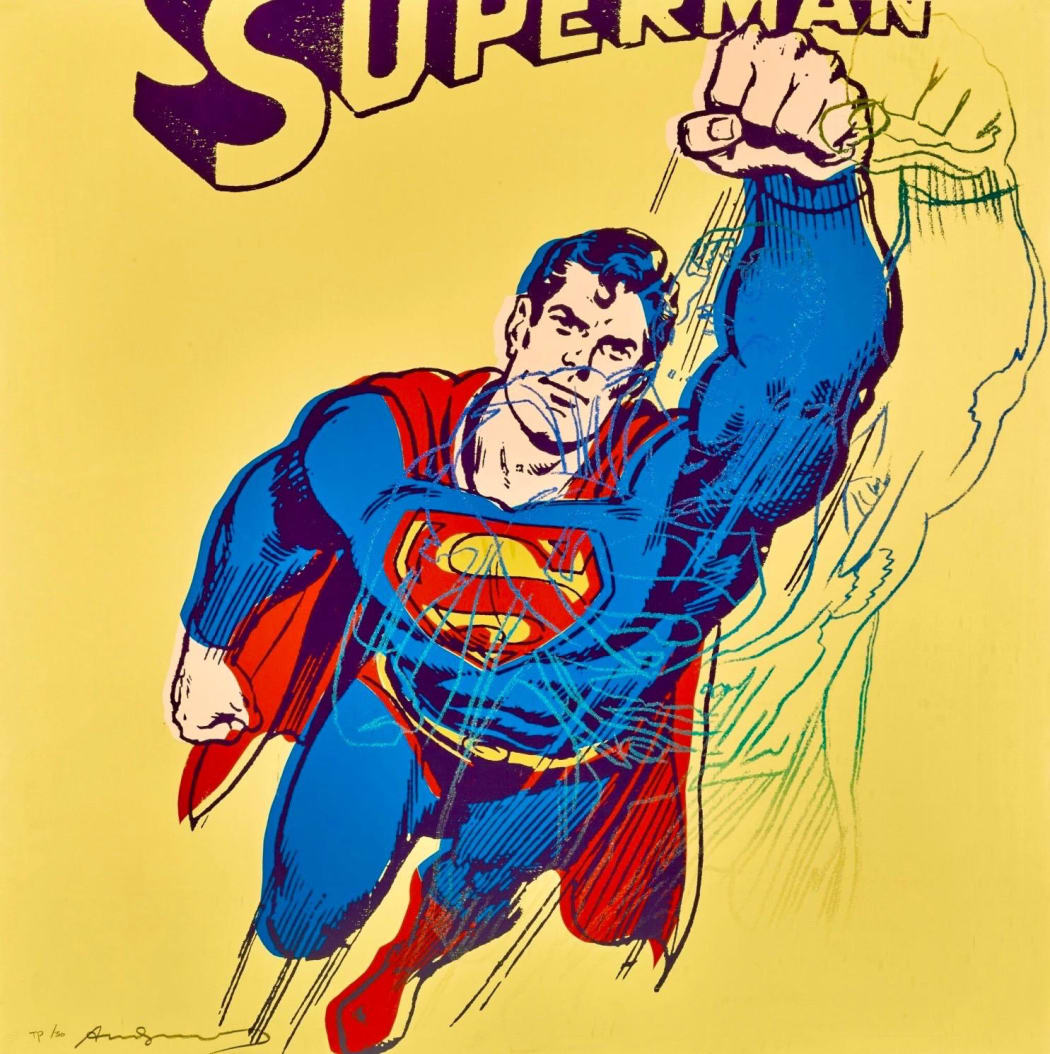
Andy Warhol built his empire on repetition, from rows of Marilyns to stacks of soup cans. But behind the final, iconic images lies a lesser known layer of experimentation: the trial proof. These are the moments where Warhol broke his own rules, testing colors, compositions, and moods in ways that reveal the inner workings of his creative mind.
-
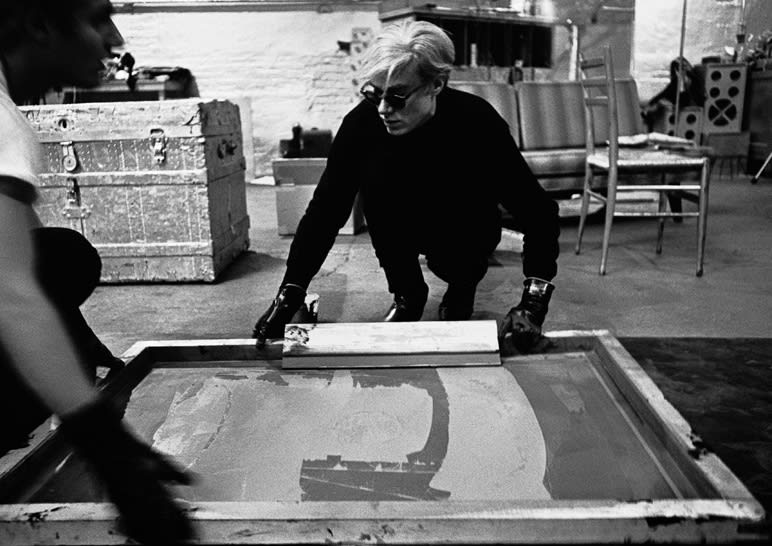
Printmaking sits at the foundation of art history. It has shaped how images are created, shared, and preserved, and remains a vital medium in contemporary art. From the intricate woodcuts of the 14th century to today’s experimental silkscreens, printmaking has evolved across cultures and centuries, developing a rich visual language rooted in repetition, reinvention, and technical mastery.
-

In the summer of 1985, Keith Haring arrived in Copenhagen for the Louisiana Museum of Modern Art’s exhibition Homo Decorens. While his visit was brief, it resulted in one of the most extraordinary prints of his career, and the largest he would ever make.
-
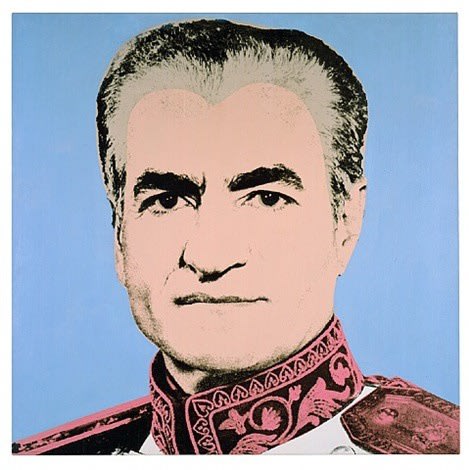
Tucked beneath the gardens of Tehran lies one of the most extraordinary and least seen collections of Western contemporary art in the world. The Tehran Museum of Contemporary Art, built in 1977 during the final years of the Shah’s reign, houses a collection estimated to be worth billions, including major works by Andy Warhol, Roy Lichtenstein, Robert Rauschenberg, and David Hockney. For decades, many of these pieces have remained in storage, sealed off behind geopolitical tensions and cultural shifts.
-
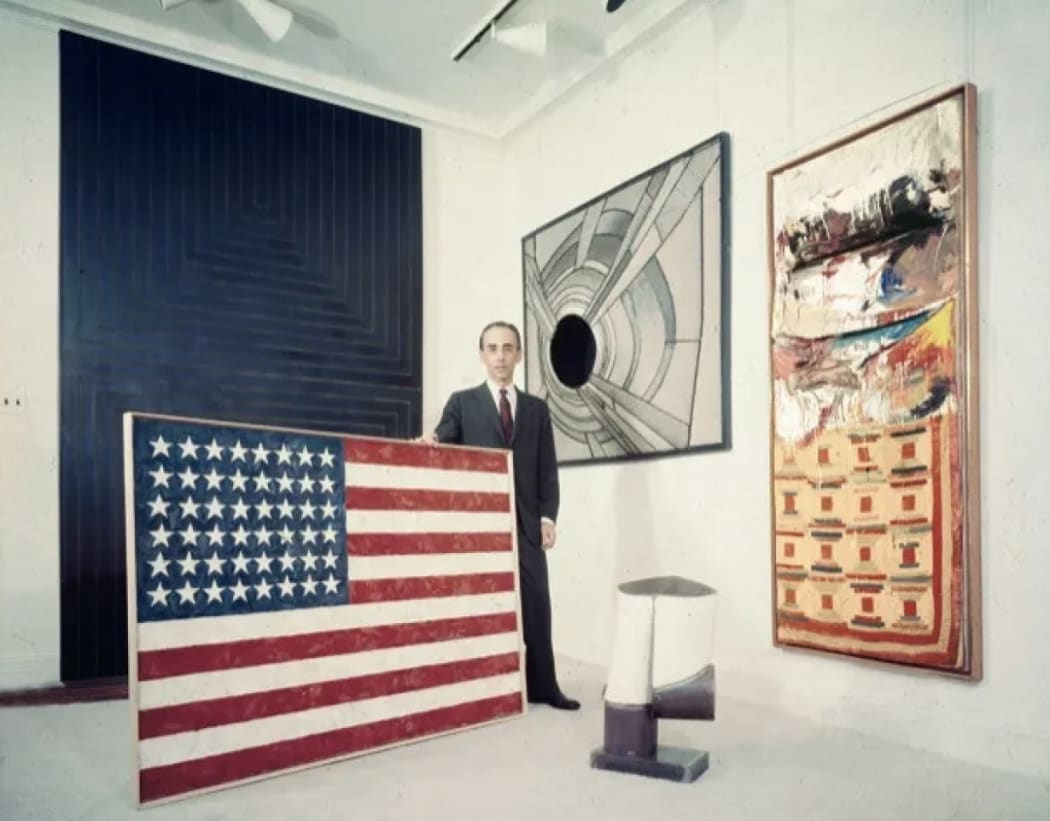
Few figures have shaped the course of contemporary art as profoundly as Leo Castelli. Known not only for his keen eye, but for his unwavering commitment to the artists he championed, Castelli turned the role of the art dealer into that of tastemaker, talent scout, and patron all at once. From a modest gallery on East 77th Street, he helped launch the careers of icons including Jasper Johns, Robert Rauschenberg, Roy Lichtenstein, and Andy Warhol, redefining the artistic landscape of postwar America.
-
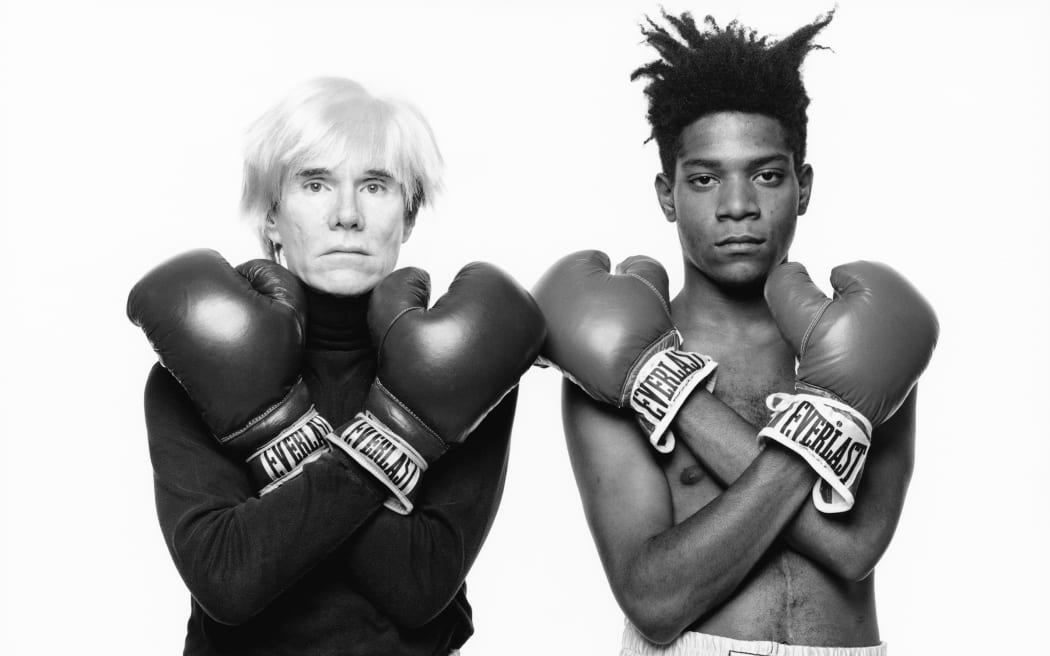
Few artistic partnerships have shaped the trajectory of contemporary art quite like that of Jean-Michel Basquiat and Andy Warhol. At first glance, they were an unlikely duo: Warhol, the polished Pop Art icon with decades of fame behind him, and Basquiat, the electric newcomer from the downtown scene whose canvases burst with raw energy and emotion. But when their worlds collided in the early 1980s, the result was one that defined contemporary art.
-
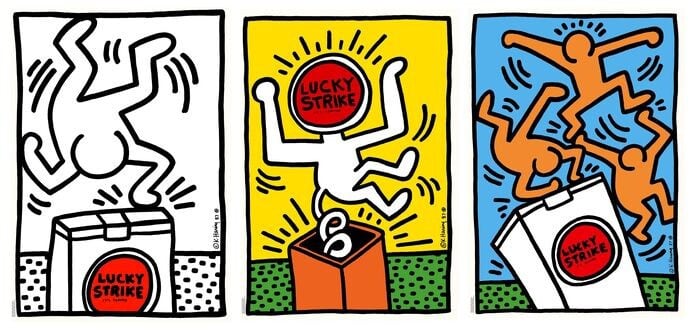
In the mid-1980s, Keith Haring entered a unique space where commercial branding and fine art converged as one. His 1987 Lucky Strike series showcases not only his use of bold lines and energetic figures, but also his keen awareness of consumer culture at a time where the line between art and advertising was beginning to blur.
-

By the late 1990s, Roy Lichtenstein had long established himself as a master of the Pop Art movement. His signature Ben-Day dots and bold outlines had transformed comic book panels and commercial graphics into icons of high art. But in his Interiors series, created between 1990 and 1997, Lichtenstein turned his lens inward. Rather than zooming out on the dramatic action of pop culture, he shifted focus to the stillness of domestic space, rendered, of course, with his unmistakable wit and stylized hand.
-
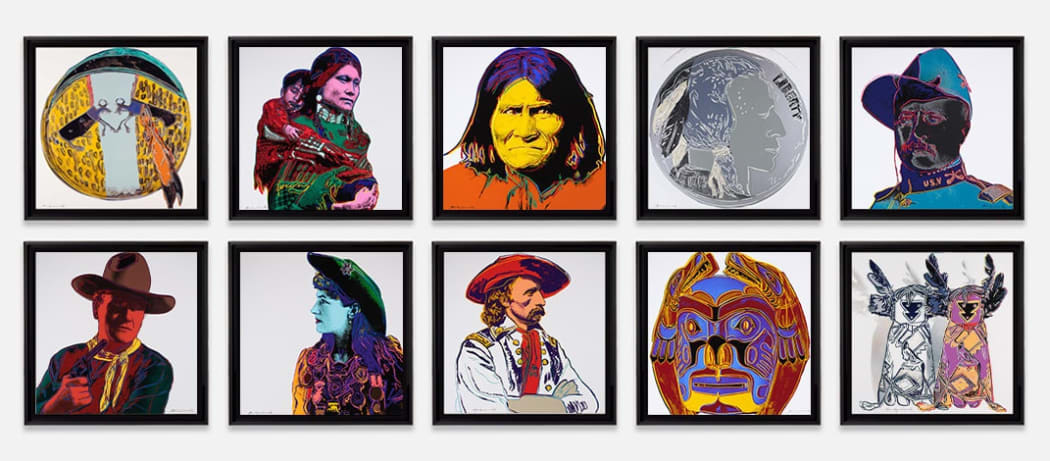
At once provocative, ironic, and visually bold, Andy Warhol’s Cowboys and Indians series stands as one of the artist’s final and most culturally layered bodies of work. Created just a year before his death, the 14-piece screenprint portfolio offers a pop-infused meditation on American identity, history, and mythology. Through bold color, repetition, and iconic imagery, Warhol merges fact with fantasy, revealing how the American West has been packaged, consumed, and mythologized in popular culture.
-
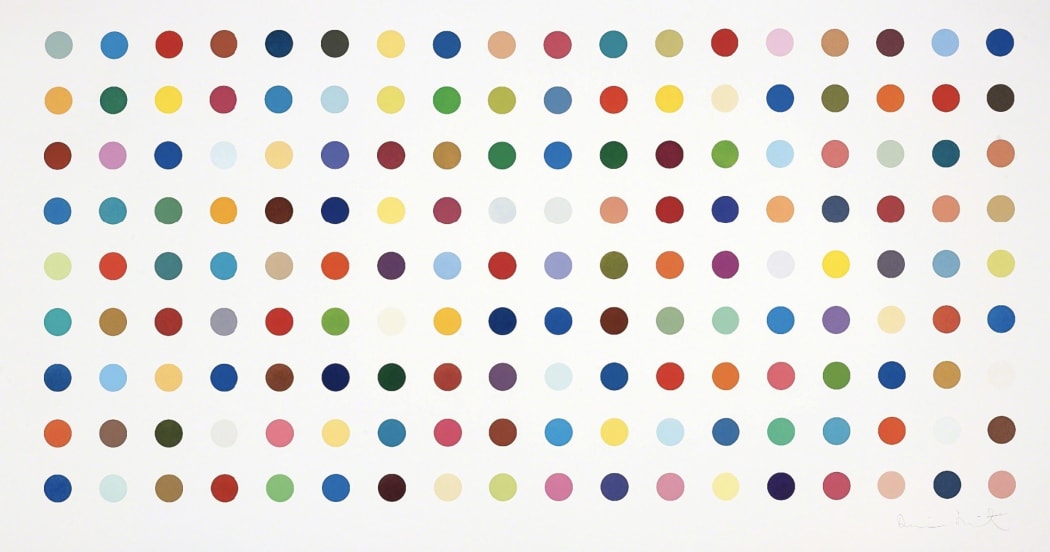
Among Damien Hirst’s most recognizable bodies of work, the Spot Paintings and Spot Prints are deceptively simple. Rows of evenly spaced, brightly colored circles on white backgrounds, they appear clean, uniform, almost mechanical. Yet beneath the surface lies a deeper inquiry into perception, systems, and the limits of control.
-

Few motifs recur in Damien Hirst’s oeuvre with the same frequency and conceptual weight as the butterfly. Both visually arresting and symbolically charged, the butterfly has served as a central element in his examination of beauty, mortality, and transformation for over three decades.
-
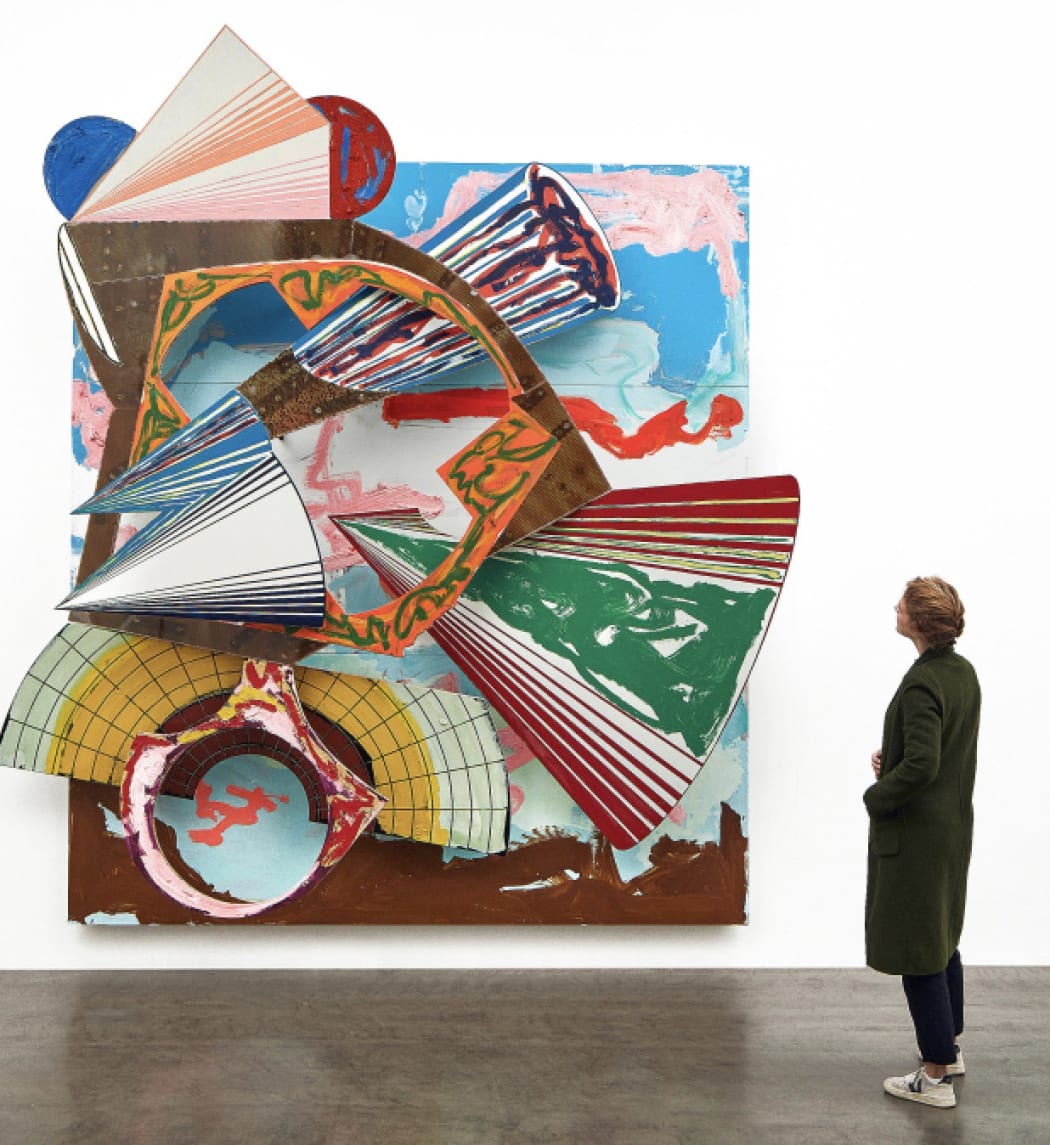
Few artists have redefined the possibilities of painting as radically, or as restlessly, as Frank Stella. From the rigid geometry of his early Black Paintings to the baroque explosions of his later three-dimensional constructions, Stella’s career charts a relentless journey outward: from flatness to depth, from restraint to exuberance, and from pure form to spatial complexity. If modernism once sought to collapse illusion into surface, Stella did the opposite — inflating surface into spectacle.
-
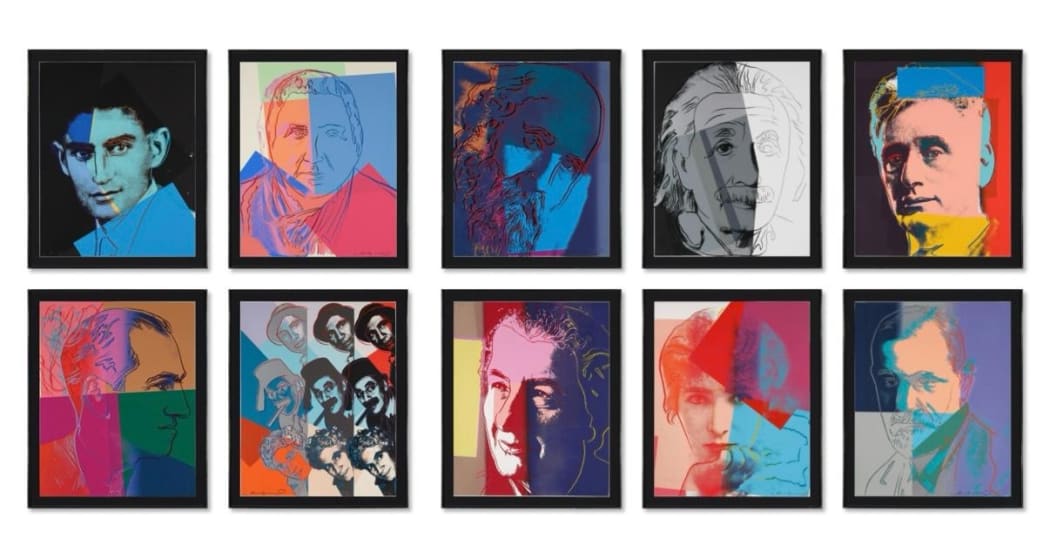
Andy Warhol’s “Ten Portraits of Jews of the Twentieth Century”
Icons of Identity and InfluenceIn 1980, Andy Warhol unveiled one of the most distinctive and debated series of his late career: Ten Portraits of Jews of the Twentieth Century. This vibrant portfolio features ten luminary figures, actors, writers, scientists, and political thinkers, whose intellectual and cultural contributions helped shape modern history. Warhol, ever the chronicler of celebrity and fame, approached these figures not just as individuals, but as symbols: cultural icons reimagined in his signature Pop language.
-
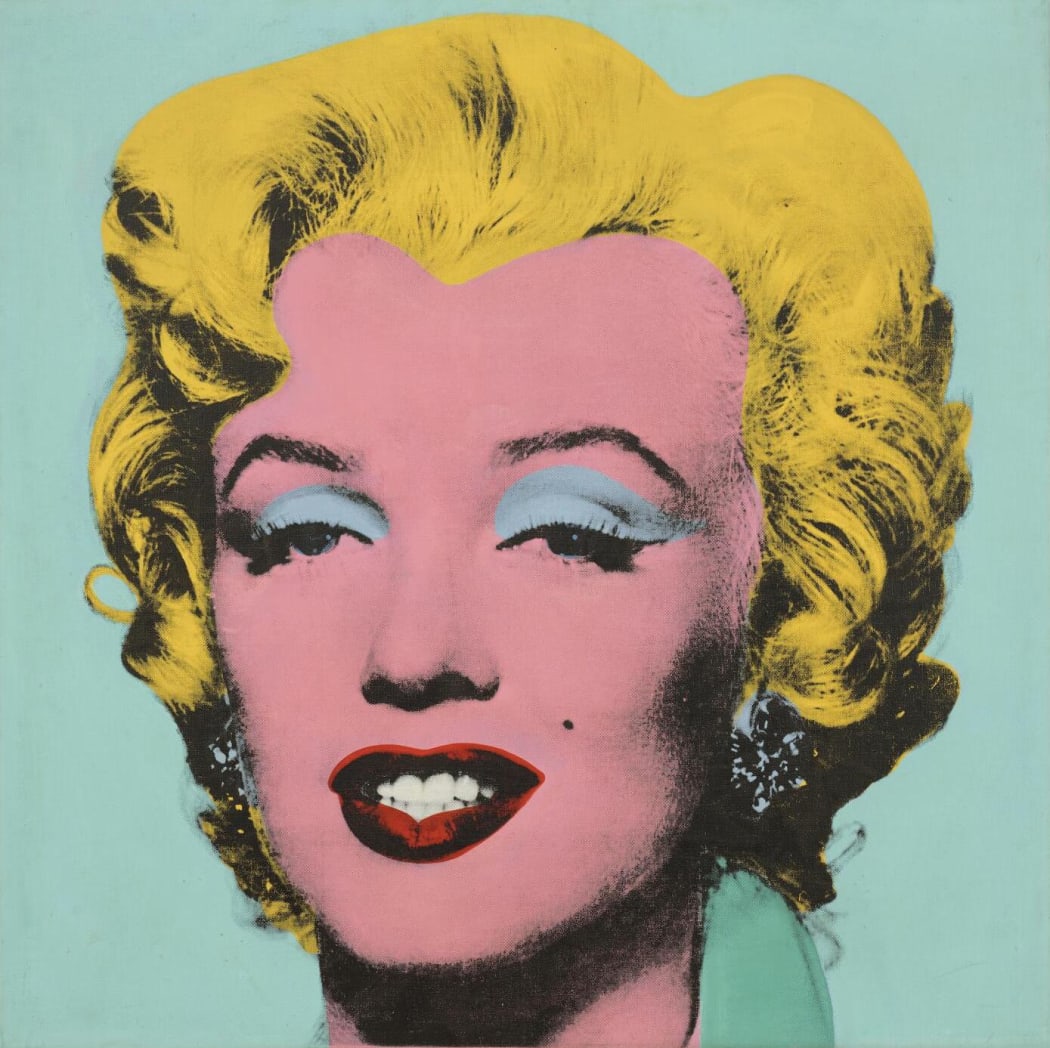
Few pairings in art history are as iconic and enduring as Andy Warhol and Marilyn Monroe. In the decades since Warhol first screen-printed her face in vibrant technicolor, the image of Marilyn has become inextricably linked with the language of Pop Art, transforming not only how we view celebrities, but how we consume them.
-
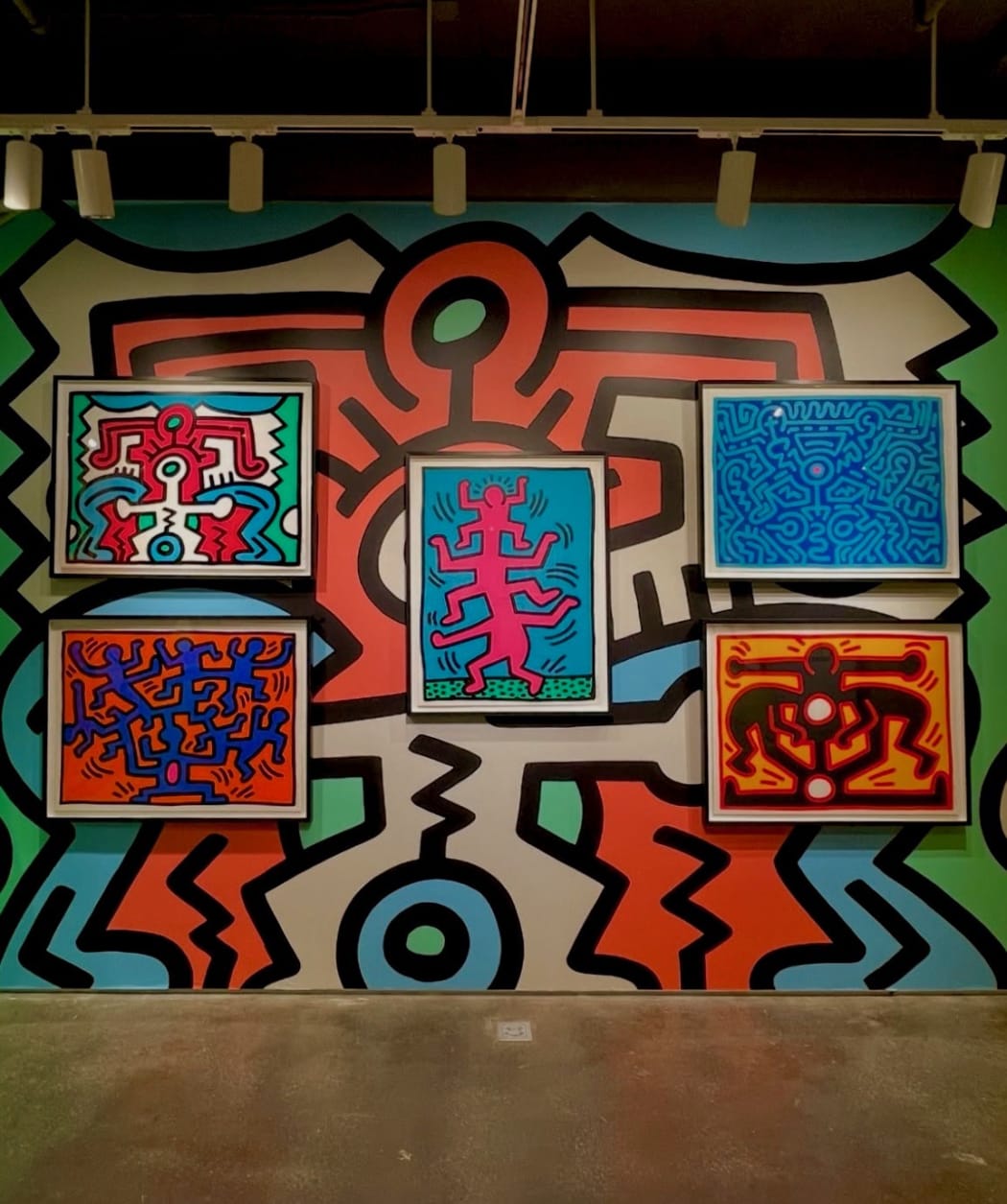 Few figures have shaped the trajectory of contemporary art quite like Tony Shafrazi. Born in Iran and educated at the Royal College of Art in London, Shafrazi made his mark in the New York art world in the 1970s and '80s, where his fearless eye and relentless advocacy helped launch the careers of now-iconic artists like Jean-Michel Basquiat, Keith Haring, and Kenny Scharf. As both a dealer and curator, Shafrazi championed the graffiti and neo-expressionist movements before they had institutional validation, establishing his gallery as a hub of energy, rebellion, and innovation. That legacy was front and center at Sotheby’s Contemporary Day Auction on May 16, 2025, where highlights from Shafrazi’s personal collection were offered to the public — many for the first time in decades.
Few figures have shaped the trajectory of contemporary art quite like Tony Shafrazi. Born in Iran and educated at the Royal College of Art in London, Shafrazi made his mark in the New York art world in the 1970s and '80s, where his fearless eye and relentless advocacy helped launch the careers of now-iconic artists like Jean-Michel Basquiat, Keith Haring, and Kenny Scharf. As both a dealer and curator, Shafrazi championed the graffiti and neo-expressionist movements before they had institutional validation, establishing his gallery as a hub of energy, rebellion, and innovation. That legacy was front and center at Sotheby’s Contemporary Day Auction on May 16, 2025, where highlights from Shafrazi’s personal collection were offered to the public — many for the first time in decades. -
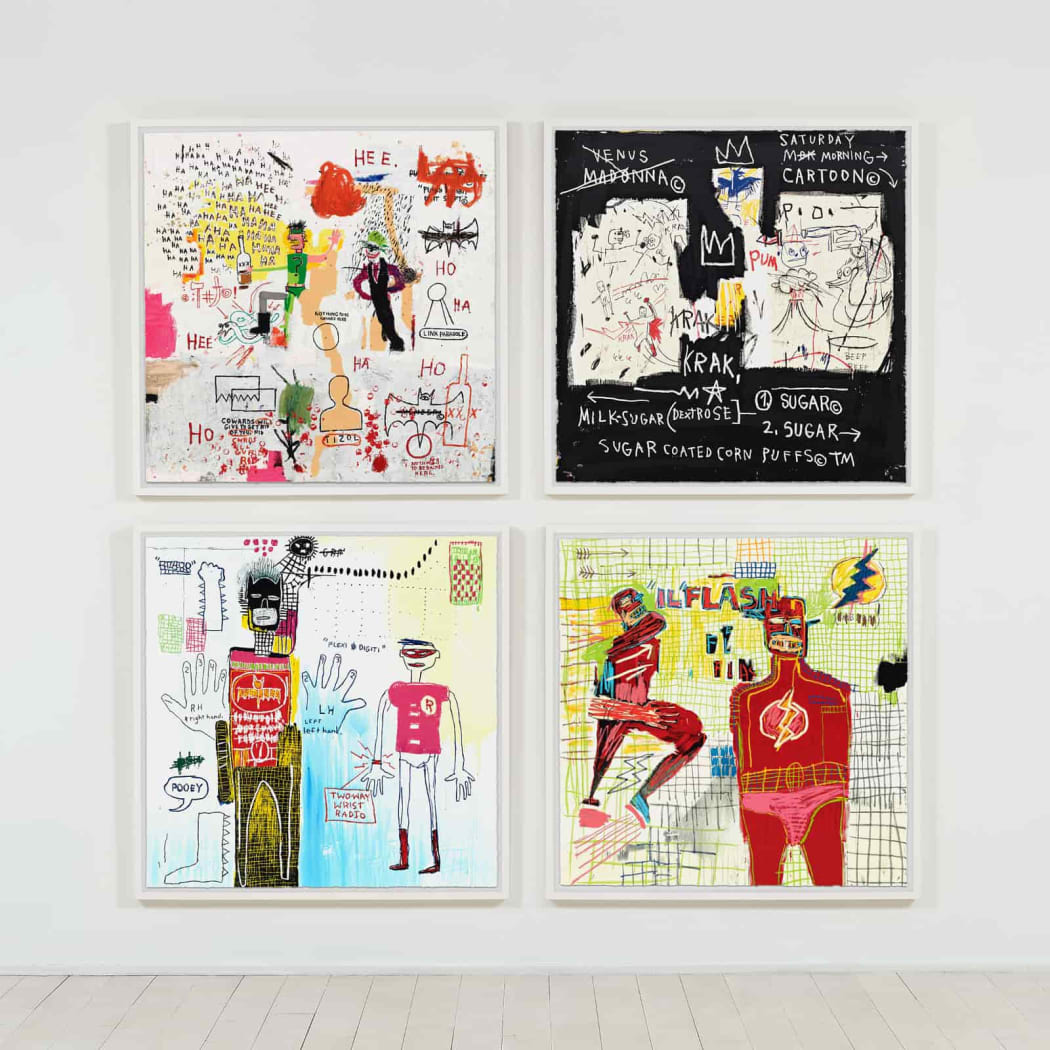
Jean-Michel Basquiat’s work continues to challenge, inspire, and captivate — decades after it first electrified the downtown New York art scene. His paintings are held in major museum collections and among the most sought-after in the market, yet the immediacy and impact of his voice extend beyond the canvas. The Basquiat Estate Prints offer a distinct and meaningful way to engage with his legacy — through a series of carefully authorized limited editions produced by the Estate of Jean-Michel Basquiat.
-
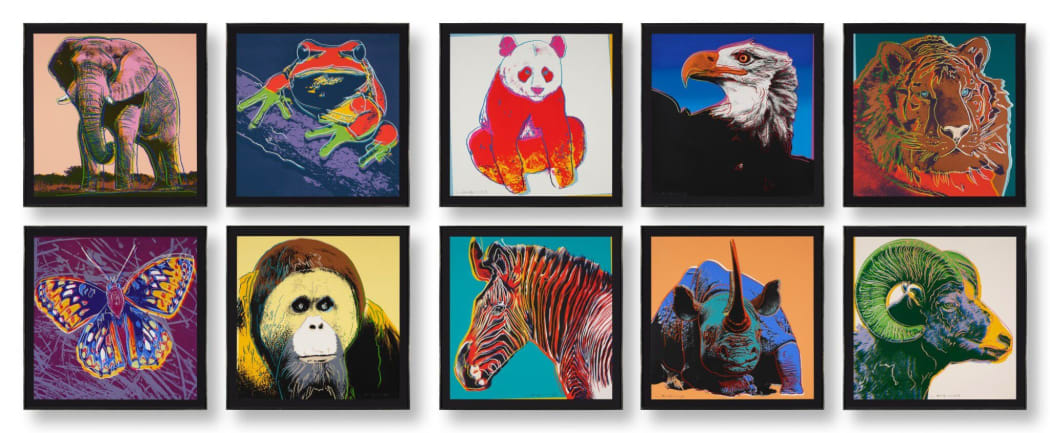
Andy Warhol’s Endangered Species Portfolio
Pop Art with a PurposeAndy Warhol’s Endangered Species portfolio, created in 1983, is one of the most compelling intersections of art and activism in contemporary art history. Best known for his portraits of celebrities and consumer goods, Warhol turned his focus to wildlife conservation with this vivid, politically resonant body of work. Commissioned by art dealers Ronald and Frayda Feldman, longtime supporters of environmental causes, this ten-print silkscreen series depicts animals facing the threat of extinction, rendered in Warhol’s unmistakable pop art style.